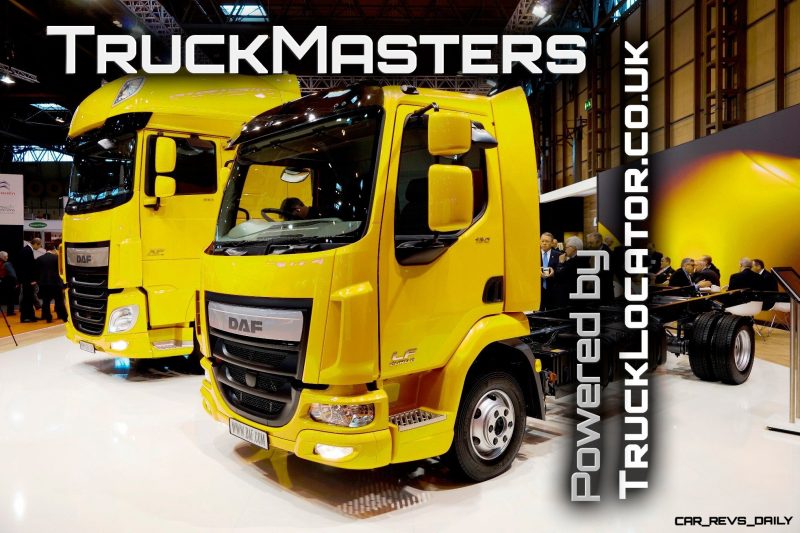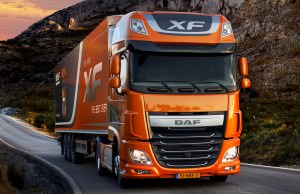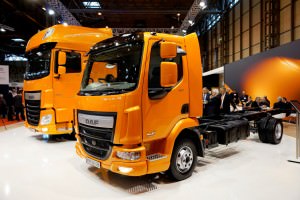Part 1 of TruckMaster Article Series
Powered by TruckLocator.co.uk
DAF Trucks – Dutch Innovation Since 1928
DAF was founded in 1928 by Hubert van Doorne and A.H. Huenges, a local business owner. Huenges’ had used the services of van Doorne on several occasions to fix his car. He was so impressed with his engineering skills he put forward an offer of investment, creating a business which the two of them would run together.
From this start-up business grew the Van Doorne’s Aanhangwagen Fabriek or Van Doorne’s Trailer Factor, more simply known as DAF. By 1936 Huenges had parted ways with the company and Hubert was now in business with his brother Wim.
The two would go on to design a range of innovative vehicles, with the name DAF still being world renowned today. Now, with the assistance of Truck Locator you can easily locate one and take it out for a test drive today.
TruckMasters DAF Trucks
So what were the innovations that set DAF apart?
In the years leading up to World War II, DAF converted Ford Trucks to an off-road drive, known as the Trado conversion. From this, an armoured vehicle the M39 Pantserwagen evolved, but unfortunately it was just a little late to be able to be used in the war.
In the wake of the Second World War everything was in short supply, including high end cars and lorries. DAF however, were able to see this as an opportunity and in 1949 they started producing buses, trailers and lorries. The first lorry rolling out of production was the DAF A30.
The 1950s
The 1950 saw DAF re-equipping the Dutch army with a further evolution of the Trado conversion. However, Hubert Van Doorne was not one to rest on his laurels and in the mid-fifties he took something he saw every day, namely the belt-driven machines in his factory, and realised that something similar could be used in vehicles.
This idea was gradually refined until, in 1958, van Hoorne was ready with his belt-driven family car. This was hugely favourably received and four thousand cars were ordered, a substantial number in the 1950s. Ultimately, in 1959 the world’s first car with a continuously variable transmission, the DAF 600 was born. It was to be the first of many such models which were produced over the next few years.
The 1960s – 1980s
The next decades were to see a period of growth for DAF and new investors coming on board. However, in 1975 DAF made the decision to sell its car division and factory to Volvo, to concentrate solely on lorry production.
The late eighties saw DAF merge with Leyland Trucks and become a public company in the Netherlands. Leyland DAF was born in the UK and the company continued to trade as DAF worldwide.
DAF’s 95 lorries went into production in 1987 and were the recipient of the prestigious ‘Truck of the Year Award’. This lorry was a true all-rounder and for the first time engineers focused on soundproofing as a key area, radically dropping the noise level in the cab. In fact this was so effective that in-vehicle noise was less than many family cars of the day. DAF continued to improve, expand and innovate in their trucks and the underlying cab design still remains in production.

The 1990s, Today and the Future
Following a number of market difficulties, in 1993 DAF NV went bankrupt. However, DAF was not to be lost and DAF Trucks came into existence in the Netherlands resulting from a management buy-out. Leyland Trucks went through a similar process in the UK. The two were reunited again by 1998, when PACCAR acquired both DAF Trucks and Leyland Trucks.
The DAF name was to live on and continues to thrive. In 2012 PACCAR initiated the build of a new vehicle plant in Ponta Grossa, Paraná Brazil. PACCAR is rightly proud of the heritage of the DAF name, from its humble beginnings through to a global corporation it is today, and you can read a full history of 85 years of innovations on the DAF website.
Part 1 of TruckMaster Article Series
Powered by TruckLocator.co.uk

CRD Auto Industry Insider may contain helpful and on-topic partner content that auto enthusiasts and car shoppers find valuable.





















